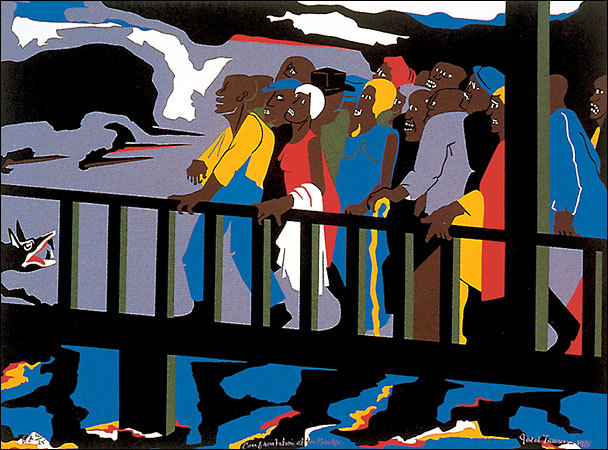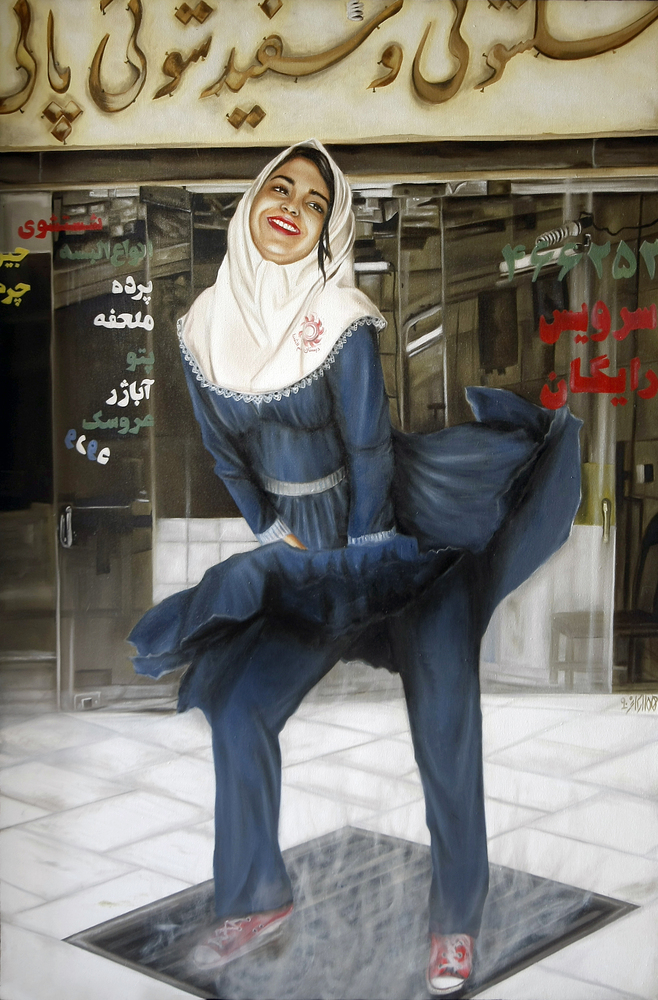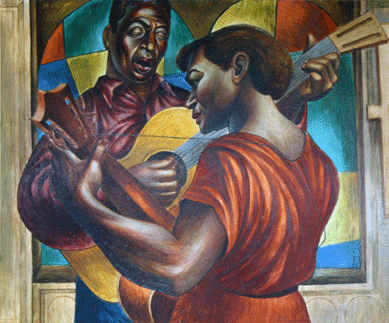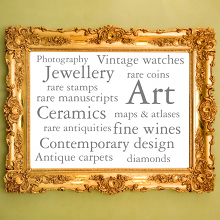
Abigail R. Esman
He was the last of the speakers at the TEFAF art market symposium last week, a diminutive young man with a heavy French accent who wasted no time introducing himself with flourish. “We have analyzed millions of data,” he announced, “and we have discovered the secret of the art market.”
Seated towards the front of the audience, I rolled my eyes and crossed my arms, dropping my pen into my lap. This was not going to be worth taking notes about, I thought. The guy’s a pompous idiot.
The speaker, however, not noticing me, continued, eager to announce his extraordinary findings.
“Prices,” he said, “go up.
“And down.”
The audience laughed. They also knew that he was right.
And so I re-palmed my pen.
Organized as part of a number of events commemorating the 25th anniversary of the European Fine Art and Antiques Fair (TEFAF), the annual event in Maastricht that brings scores of collectors from all around the world to rummage through the most expensive and highly-sought after art and antiques prizes on the market, the symposium was aimed at determining the difference between collecting for passion and collecting as investment – or whether, in fact, there was one. (Spoiler alert: There is.) TEFAF itself had performed its own informal survey at the opening preview, asking random visitors among the 10,000-plus who attended whether their interest in art collecting was based on passion or investment. Ten percent admitted that they bought chiefly for the money.
It was to them that Fabian Bocart, founder of the Brussels-based Tutela Capital, was primarily speaking when he announced his “secrets of the art market,” though any major collector might want to heed his advice – as well as some of the remarks made in a subsequent panel discussion by Philip Hoffman, Chief Executive of the Fine Art Fund Group, an art investment fund. Here are their insights, augmented (and disputed) here and there with my own observations:
1. Contemporary art – which is what makes most of the headlines these days — remains the most volatile market. It is also therefore the one offering the top rewards, so long, as Bocart notes, that you “buy wisely, sell wisely, and take care regarding authentication.”
2. The fluctuations in the market for one artist can and often will affect the market for another, related artist. Knowledge of art movements and art history can help you better understand these connections. As Bocart pointed out, a drop in the value of Warhols may pave the way for a drop in value of Basquiats. It may or may not lead to a drop in the value of, say, works by Minimalists like Sol LeWitt or Abstract Expressionists like Jackson Pollock. It will certainly not affect the values of Renaissance Masters.
3. For this reason, diversification is key.
4. Diversification can also mean moving beyond fine art into decorative art. Philip Hoffman has made investments into Chinese porcelain, for instance, that have served his clients well.
5. Value is found not only in the artist, but in the quality of a given work. Always buy the best you can afford – and to do so, of course, requires, again, understanding and a certain amount of expertise in the artist’s oeuvre. Lacking this, find a very good art advisor – and by “good” I mean not only “knowledgeable,” but also one you trust. Better to buy a great Wesselmann than a bad Warhol, for instance; the first is far more likely to be liquid than the latter, and will appreciate more over time.
6. Watch out for seeming bargains. If a work fails to sell at auction (or at successive art fairs), the market will consider it “burned” and hence, illiquid. This leaves the door open to purchase at a reduced price – but be prepared to have to hold it for a while before you can return it to the market. Even then, most collectors will have access to Internet records of its sales history, making it difficult to achieve a significant profit should you try to resell within ten years. (After that, however, it is perfectly reasonable, in my view, to expect – and to get — fair market value for the work.)
7. Bocart advises calculating – and writing down – the possible profits or losses for an investment, and compare them. In an example comparing Canaletto and Warhol, for instance, he predicted that a Canaletto could increase in value 36 percent, or decrease one percent, over ten years. A Warhol could increase 52 percent or decrease 71 percent in value over the same period. However, over the course of 25 years, that same Warhol could increase in value 209 percent (or decrease by 80 percent). The scale for Canaletto would be nowhere near as dramatic (potentially up 127 percent or down 58 percent in 25 years), making Warhol both distinctly more volatile and yet significantly more profitable over the long term.
8. It sounds obvious, but merits saying: buy low, sell high (with the caveat of #6, above). As with all commodities, the art market can turn on a dime, and specific artists go in and out of favor whatever the art market generally may be doing. Currently, for instance, Dutch Impressionist works are down about 30 percent from where they were just five years ago. The problem here is that it is a very localized market – and therefore not very likely to recover. Which brings me to
9. I asked Bocart what his thoughts were about similar “local” or nationally-based art movements, like the current run on Chinese contemporary or the interest, not long ago, in Pakistani and Indian art. My own passion at the moment lies with new art coming out of the Middle East and Muslim countries, particularly Iran and Iraq. Bocart’s take, sounding like the financial analyst he is, is that “”Emerging markets’ surely can be considered as serious investments, indeed at the global scale, but the constitution of ‘optimal baskets’ requires a very good understanding of local markets in order to best manage financial and operational risks.”
This is a bit too investment-speak for me. I’m not sure I’d even agree with the term “emerging markets” in this regard, especially in the case of Middle Eastern/Islamic contemporary art (as I call it), where it’s not the market that’s emerging, in fact, but our discovery of it. Great art is great art.
But the notion does suggest a motivation behind the hyped interest in Chinese contemporary, at least, very little of which is actually any good and most of which, I suspect, will land in the backs of closets within a decade, unseen and unsaleable: a combination of patronizing Colonialism, especially on the part of the British (who were among the first collectors of the stuff outside of China); and an impulse of fascination with China itself – not its history, not its art traditions, but the economic phenomenon. (It probably bears mentioning that my faith in the sustainability of the Chinese economy, and certainly of its art market, isn’t so great, either.)
Of course, I do think Bocart is right when he says that one needs to know what one is buying. But that’s true of all art, really.
10. Finally, there is the matter of the primary markets – buying new art by young artists. In one sense, this can be the riskiest: the vast majority of these artists never really make it. And as Bocart observed in a recent e-mail, “it is difficult to analyze the primary contemporary market as an investment since it is mainly a consumption good. A massive amount of artworks sold in the primary market will never be sold again.”
But many will. And while the chances that your own discovery of a new artist will prove financially rewarding may be smaller than the chance of an increase in value of a Picasso drawing, the cost of a work by a young artist is also a small fraction of the cost of said Picasso; in other words, you are intrinsically buying low.
This, too, though – and more than perhaps anything else – demands connoisseurship, study, and a great deal of pounding the pavement, visiting galleries and art fairs and museums. It’s not work for the pure investor, but it can develop into a great hobby. All those $40 million Warhols were just $300 and $500 once. (Think of the New York couple, Dorothy and Herbert Vogel – he a postal worker, she a librarian, who scrimped and saved to buy small works by emerging Minimalists in the 1960s and 70s, paying just a few hundred dollars for each — and whose collection is now worth hundreds of millions of dollars – though they refuse to sell a single thing.)
Ultimately, though, Bocart notes that one can always “invest confidently in art, because an artwork will never be bankrupt.” My own advice to collectors is this: if you love it, buy it. If you choose well, one day you will be able to sell it for a profit. And if you choose very well, you won’t want to.
NOTE: Bocart’s slide presentation, including graphs, can be found here.
Like this:
Like Loading...









